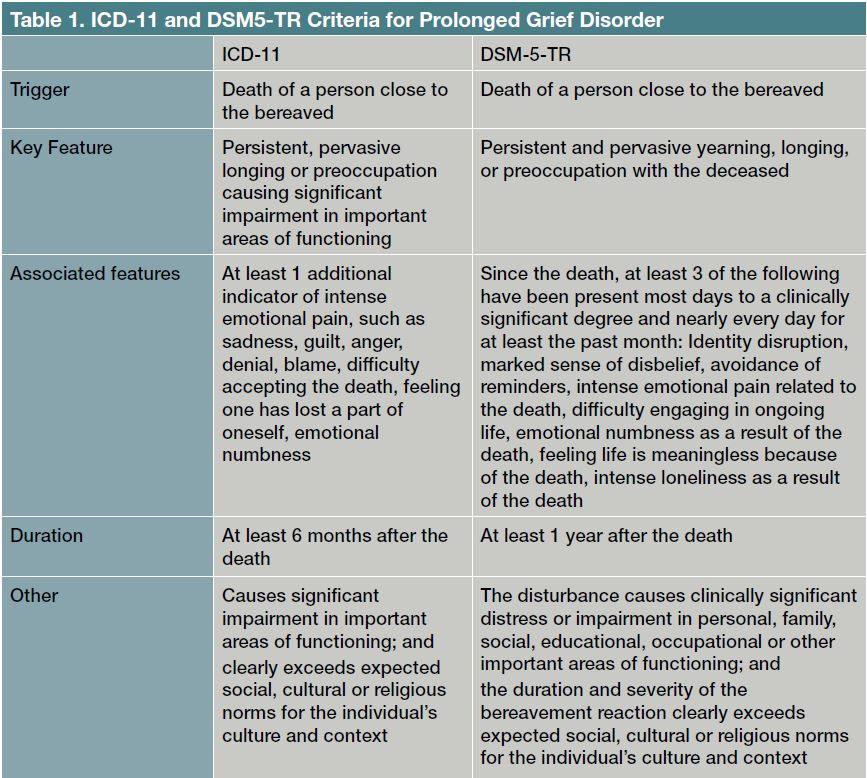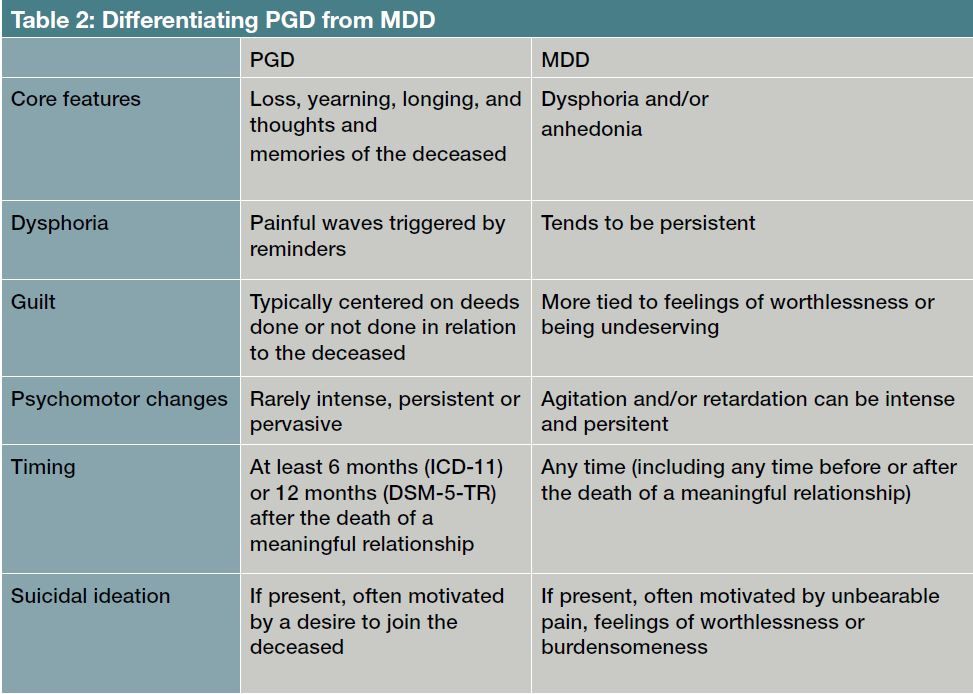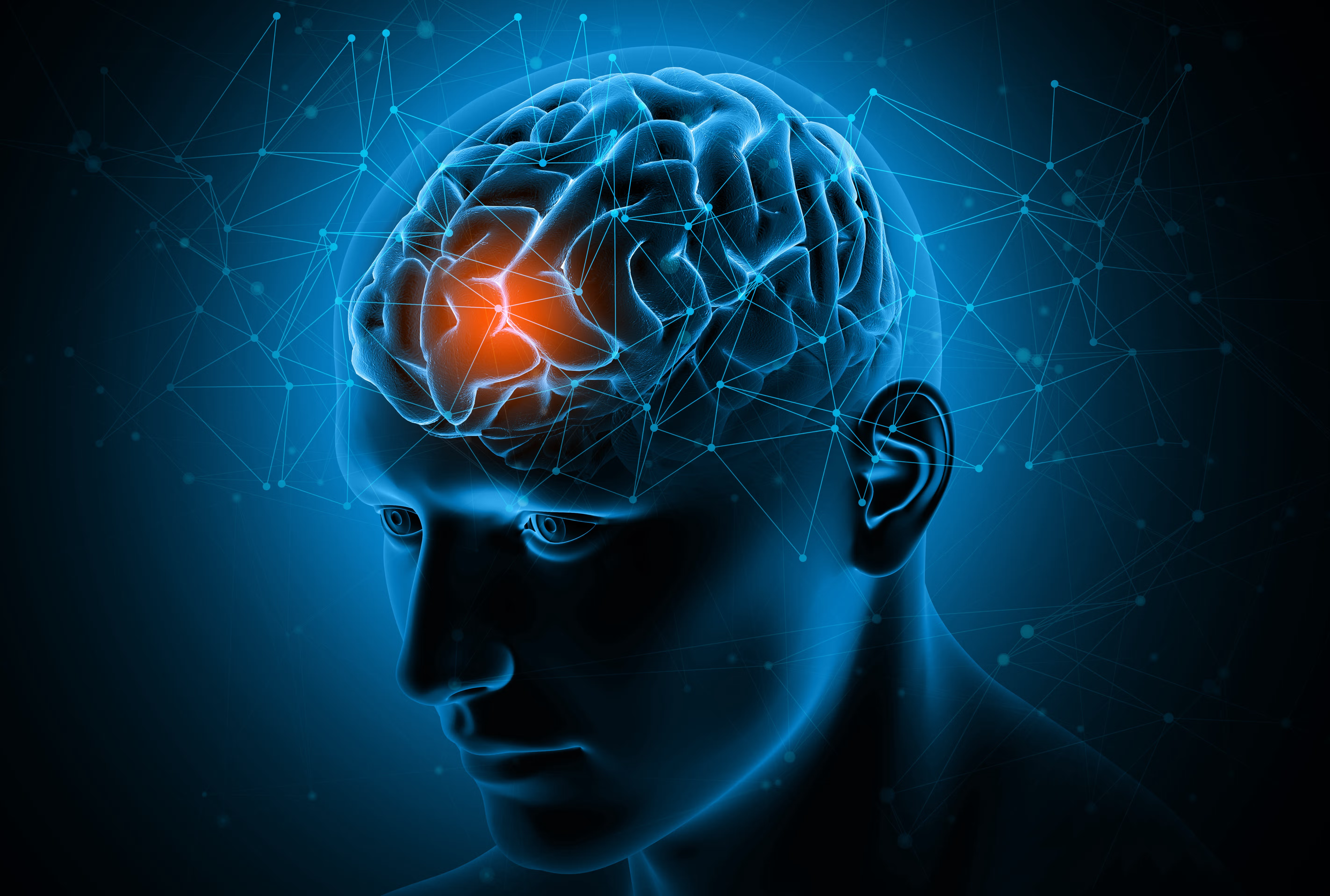Article
Bereavement and Depression
Author(s):
How can clinicians distinguish between ordinary grief, depression, and prolonged grief disorder?
Photographee.eu/shutterstock

“The risk of love is loss and the price of loss is grief. But the pain of grief is only a shadow when compared with the pain of never risking love.” — Hilary Stanton Zunin
The figurative and literal losses associated with the COVID-19 pandemic are profound. These losses highlight the need for mental health professionals to gain sophistication in understanding, recognizing, and approaching grief in all its myriad forms in the clinical setting. The term “grief” describes the emotional, cognitive, functional, and behavioral responses to a meaningful loss. Throughout life, individuals face a number of losses capable of triggering grief. These include, but are not limited to, loss of their youth, opportunities, functional abilities, health, jobs, and meaningful relationships.
Bereavement is a nearly universal phenomenon, often experienced many times throughout life. Of all the events and stressors in ordinary life, bereavement may have the most powerful impact. Yet, bereaved individuals, their family and friends, and even mental health clinicians often are perplexed about its nature, course, and prognosis. In this article, we describe key characteristics of the acute grief response, the natural transition to integrated grief, and 2 related conditions that often require clinical attention: prolonged grief disorder (PGD) and major depressive disorder (MDD). PGD is a condition that occurs when the transition from acute to integrated grief is derailed. Meanwhile, MDD, a mood disorder that is not necessarily linked to grief, may be precipitated or exacerbated by meaningful losses, including bereavement.
Forms of Grief
Acute Grief. Bereavement usually triggers an acute grief response. Although not unique in all respects, some aspects of grief following bereavement are distinctive. As death is final and irreversible, bereaved individuals often experience their grief with a sense of helplessness and disconnection. The hallmark of acute grief is the intense focus on thoughts and memories of the deceased individual, accompanied by sadness, yearning, and longing. Acute grief is not a linear process with concrete stages or boundaries. Rather, it is a composite of overlapping and fluid cognitions, emotions, and behaviors that vary across individuals and even in the same person after different losses and over time.1 The experience of grief is influenced by social, religious, and cultural norms as well as by age, health, ethnic identity, coping style, attachment style, circumstances of the death, prior losses, and available social support and material resources.2 Yet, despite the variation and individual nuances, there are some common features and challenges of acute grief that many bereaved individuals face.
First are frequent strong feelings of yearning and sorrow. These are powerful feeling states, generally occurring in periodic waves of intense emotional distress that are often accompanied by somatic discomfort. These feelings may include a wrenching of the gut, shortness of breath, chest pain, lightheadedness, weakness, rapid welling up of tears, and uncontrollable crying. During the early days and weeks, these responses tend to erupt often, suddenly, and unexpectedly. Over time, their occurrences tend to be increasingly tied to specific thoughts and reminders of the deceased. As a result, their frequency and intensity diminish.
Second is a mixture of other feelings (positive and negative). Some common challenging thoughts, emotions, and experiences include: a sense of disbelief; intrusive thoughts and images focused on the deceased; decreased interest in ongoing life; feelings of insecurity, emptiness, loss, anger, guilt, anxiety, and loneliness; feeling overwhelmed or helpless; and varying degrees of distractibility, poor concentration, confusion, forgetfulness, or lack of clarity and coherence. Yet, even during acute grief, these painful experiences often are intermingled with positive feelings. For example, a grieving individual may experience warmth, amusement, or pride when thinking about their loved one and recollecting tender and/or humorous memories. There can be a sense of relief at the end of suffering. Depending upon the grieving individuals’ beliefs about death and the afterlife, they may feel joy, peace, and contentedness alongside the more painful feelings and thoughts.
Integrated grief. Although grief following bereavement is painful and associated with emotional and somatic distress, most individuals adapt to their loss, find a way through the acute grief period, and ultimately continue with their lives without professional assistance. Mourning is the process of adapting to loss, and this process can transform acute grief into what we call integrated grief.1,2 Adaptation entails coming to grips with the reality, permanence, and consequences of the loss; establishing a new relationship with the deceased through memory and deeds; and looking forward to a future where life can be meaningful and joyful, even without the deceased. When mourning is successful, the painful and disruptive experience of acute grief transforms into an experience of integrated grief that is bittersweet but no longer all consuming. In integrated grief, individuals who are bereaved recognize what the loss has meant to them and that they are once again capable of experiencing happiness and meaning. They are thus able to shift attention from their loss to the world around them.3,4
ICD-11 and DSM-5-TR Criteria for Prolonged Grief Disorder

Prolonged grief disorder. For a meaningful minority of grieving individuals, perhaps as high as 7% to 10%, the natural transition from acute to integrated grief is forestalled.5-8 For these individuals, maladaptive thoughts, feelings, and/or behaviors derail both adaptation to the loss and restoration of a life with meaning, joy, and purpose.2 Instead, the agony, yearning, and preoccupation with the loss remains intense and debilitating. This state has been formally recognized by both the ICD-11 and DSM-5-TR as “Prolonged Grief Disorder” (Table 1); in the past it was often called complicated grief (CG), and it was called persistent complex bereavement disorder in the DSM-5.9,10 The distinguishing characteristics are persistent and intense grief that lasts well beyond the period expected by social and cultural norms (6 months in ICD-11 and 1 year in DSM-5-TR) and results in impairments in daily functioning. Many of the features noted in the acute grief section above, in a heightened state, characterize PGD, with the key difference being their persistent intensity without a substantial trajectory toward adaptation to the loss. In brief, healing is stalled and bereaved individuals who have PGD appear figuratively frozen in grief.
PGD may follow the loss of any close relationship but occurs more often in parents who have lost a child and after the death of a spouse or romantic partner.11 It is more likely when the death is unexpected, sudden, or violent, such as after suicide, homicide, or an accident.12,13 Multiple factors appear to increase the risk of PGD, including depression, anxiety disorders, current substance use/abuse, multiple losses, particularly stressful circumstances surrounding the death, lack of social supports, uncertainty about the death, and the unavailability of usual mourning rituals.8,14
Talking About Grief
Psychotherapy is the treatment of choice for PGD. A focused, manualized form of psychotherapy has been found to be robustly effective in 3 separate randomized trials.3,15,16 The primary goals of this grief focused therapy are to identify and resolve processes that derail adaptation and thereby get in the way of acute grief transforming into integrated grief. In our experience, PGD often remains undiagnosed and/or is misdiagnosed as MDD. However, in each of the studies noted above, participants treated with psychotherapy more specific to depression15,16 or antidepressant pharmacotherapy3 did not respond nearly as well as those treated with the grief focused therapy. In the latter study, antidepressant medication, either alone or in combination with psychotherapy, was not found to alleviate grief, but antidepressant medication demonstrated some promise for decreasing depressive symptoms when given along with the therapy.
When formal therapy for PGD is not available, there is still much the clinician can do. The first step is to include an inquiry about bereavement as part of all initial evaluations and to have an open ear for issues related to grief in ongoing clinical management. Questions to help identify and guide the inquiry include: Has anyone close to you died? If so, have you been able to grieve and adjust to life without him/her? Are you still struggling with your loss in any way? Do you mind if I ask you more about it?
If the answers suggest an issue with grief, the next step is to invite an open inquiry into the relationship, death, mourning process, and impact of the loss. Supportive, nonjudgmental, empathic communication can let patients know they are not alone and can aid in the healing process. Other components of grief-informed clinical management include monitoring symptoms, letting the patients know you are there for them, and providing gentle encouragement for re-engaging in daily activities.17 In addition, optimizing treatment of cooccurring conditions and providing information about available support resources, such as the Center for Complicated Grief website and the American Foundation for Suicide Prevention website for suicide-loss survivors, can be invaluable. Left untreated, PGD is a debilitating and often chronic condition. Recognition and proper intervention can be life promoting and, in some cases, life saving.
Depression and Bereavement
The relationship between depression and bereavement is complicated and often perplexing to even the most seasoned clinicians. Based largely on Clayton’s pioneering studies on the relationships between grief and depression,18-20 the DSM-III introduced the Bereavement Exclusion (BE) for the diagnosis of MDD.21 This was meant to protect against grief being mistaken for depression, mislabeled as an illness, pathologized, and/or inappropriately treated. The BE disallowed the diagnosis of MDD during the first 2 months of bereavement unless the depressive symptoms and dysfunction were particularly severe, defined by symptoms of morbid worthlessness, psychomotor retardation, suicidal ideation, psychotic features, or marked disability.
The BE was subsequently eliminated in the DSM-5, as the DSM-5 mood disorders task force concluded it had become a roadblock to the diagnosis and treatment of MDD.22 Instead, the revised diagnostic criteria for MDD included a note that promoted the use of clinical judgment “based on the individual’s history of the cultural norms for the expression of distress in the context of loss” and provided guidelines to help differentiate MDD from grief that is not complicated by co-occurring MDD.
Differentiating PGD from MDD

For example, in grief the predominant affect is emptiness and loss as opposed to the persistent depressed mood and anhedonia of MDD. In grief, the dysphoria decreases in intensity over days to weeks and occurs in waves that are associated with thoughts or reminders of the deceased. In contrast, with MDD, the dysphoria tends to be persistent and is not tied to specific thoughts or images. Grief is characterized by a preoccupation with thoughts and memories of the deceased, whereas in MDD the preoccupation is with self-critical or pessimistic ruminations. Similarly, self esteem is preserved in grief, while feelings of worthlessness predominate one’s self-view in MDD. Thoughts of death and dying in grief are generally focused on the deceased and possibly about joining or reuniting with the deceased loved one, while thoughts about dying in MDD more often are focused on ending one’s life in the setting of feeling worthless, undeserving of life, or unable to cope with the pain and misery of depression.23 In contrast to the experiences of those with MDD, bereaved individuals often retain the capacity to laugh, to appreciate the comfort and support of relatives and neighbors, to be consoled, and to recognize that what they are going through will lessen in time (Table 2).
But the key question may not be one of either/or. Rather, knowing that bereavement triggers grief in most, and MDD in some, changes the question from whether a bereaved individual is grieving or depressed, to whether they are grieving and experiencing cooccurring MDD. Changing the question in this way may open the door to prompt diagnosis and treatment when indicated.
The importance of appreciating both the uniqueness and confluence of these conditions is underscored by several factors. MDD is a risk factor for developing PGD as well as a potential consequence of the death of a loved one in an individual already predisposed to MDD. Studies have confirmed high rates of both past and current MDD in bereaved individuals with PGD.3,24 While research on the influence of MDD on the severity or treatment outcome of PGD is sparse, the collective clinical experiences of the authors of this article suggest an adverse effect on intensity, duration, function, and treatment response of PGD in direct proportion to the severity of the cooccurring depression. Furthermore, while the only systematic, large, randomized controlled study on the effects of antidepressant medications for PGD did not demonstrate an effect of antidepressants on grief symptoms, it did suggest antidepressants relieved symptoms of depression in participants who also received grief-focused psychotherapy, and only in those.3
More is known about the effects of PGD on MDD. In a large multisite study of treatment resistant MDD, a surprisingly large proportion of the patients had symptoms of PGD, which had not been noted in the clinical charts and had not been the focus of any treatments. Importantly, those with symptoms of PGD had more severe depression, increased suicide risk, and were significantly less likely to respond or remit to treatment.25
Concluding Thoughts
Clinicians must carefully distinguish between grief, PGD, and MDD. A disorder that can occur when the natural grieving process is derailed, PGD is a painful and debilitating condition that can last for years in the absence of PGD-focused treatment. For PGD, the treatment of choice is either providing evidence-based PGD therapy or making a referral to a grief specialist. The aim is to provide support for healthy lifestyle and activities while also treating potential co-occuring conditions. If a bereavement specialist is not available, grief-informed clinical management can be enormously helpful. It is the authors’ hope that the guidance delineated in this article allows for a more refined, therapeutic approach to grief in various clinical settings—an approach that is especially relevant during this unique time in history when themes of loss and grief are so salient and pervasive.26,27
Dr Clark is a resident in psychiatry at the University of California, San Diego. Dr Iglewicz is an associate clinical professor in the department of psychiatry at the University of California, San Diego. Dr Zisook is distinguished professor in the department of psychiatry at the University of California, San Diego.
Learn more about grief from Dr Iglewicz or mood disorders from Dr Zisook, please join us for the Annual Psychiatric Times World CME Conference September 30, 2021 through October 2, 2021. Registration is now open.
References
1. Shear K, Reynolds C, Simon N, Zisook S. Grief and bereavement in adults: clinical features. UpToDate. 2017. Accessed August 27, 2021. https://www.uptodate.com/contents/grief-and-bereavement-in-adults-clinical-features
2. Zisook S, Simon NM, Reynolds C, et al. Phenomenology of acute and persistent grief. In: Simon N, Hollander E, Rothbaum BO, & Stein D J, eds. The American Psychiatric Association Publishing Textbook of Anxiety, Trauma, and OCD-Related Disorders, 3rd ed. American Psychiatric Association Publishing; 2020:557-570.
3. Shear MK, Reynolds CF 3rd, Simon NM, et al. Optimizing treatment of complicated grief: a randomized clinical trial. JAMA Psychiatry. 2016;73(7):685-694.
4. Zisook S, Shear K. Grief and bereavement: what psychiatrists need to know. World Psychiatry. 2009;8(2):67-74.
5. Kersting A, Brähler E, Glaesmer H, Wagner B. Prevalence of complicated grief in a representative population-based sample. J Affect Disord. 2011;131(1-3):339-343.
6. Lundorff M, Holmgren H, Zachariae R, et al. Prevalence of prolonged grief disorder in adult bereavement: a systematic review and meta-analysis. J Affect Disord. 2017;212:138-149.
7. Prigerson HG, Bierhals AJ, Kasl SV, et al. Traumatic grief as a risk factor for mental and physical morbidity. Am J Psychiatry. 1997;154(5):616-623.
8. Shear MK. Clinical practice. Complicated grief. N Engl J Med. 2015;372(2):153-160.
9. Diagnostic and Statistical Manual of Mental Disorders, 5th ed. American Psychiatric Association Publishing; 2013.
10. International statistical classification of diseases and related health problems (11th ed.) World Health Organization. 2019. Accessed August 18, 2021.
11. Meert KL, Shear K, Newth CJ, et al. Follow-up study of complicated grief among parents eighteen months after a child's death in the pediatric intensive care unit. J Palliat Med. 2011;14(2):207-214.
12. Kristensen P, Weisæth L, Heir T. Bereavement and mental health after sudden and violent losses: a review. Psychiatry. 2012;75(1):76-97.
13. Tal I, Mauro C, Reynolds CF 3rd, et al. Complicated grief after suicide bereavement and other causes of death. Death Stud. 2017;41(5):267-275.
14. Zisook S, Reynolds CF 3rd. Complicated grief. Focus (Am Psychiatr Publ). 2017;15(4):12s-13s.
15. Shear K, Frank E, Houck PR, Reynolds CF 3rd. Treatment of complicated grief: a randomized controlled trial. JAMA. 2005;293(21):2601-2608.
16. Shear MK, Wang Y, Skritskaya N, et al. Treatment of complicated grief in elderly persons: a randomized clinical trial. JAMA Psychiatry. 2014;71(11):1287-1295.
17. Iglewicz A, Shear MK, Reynolds CF 3rd, et al. Complicated grief therapy for clinicians: an evidence-based protocol for mental health practice. Depress Anxiety. 2020;37(1):90-98.
18. Clayton P, Desmarais L, Winokur G. A study of normal bereavement. Am J Psychiatry. 1968;125(2):168-178.
19. Clayton PJ, Halikes JA, Maurice WL. The bereavement of the widowed. Dis Nerv Syst. 1971;32(9):597-604.
20. Clayton PJ, Darvish HS. Course of depressive symptoms following the stress of bereavement. Stress and mental disorder. 1979:121-136.
21. Diagnostic and Statistical Manual of Mental Disorders, 3rd ed. American Psychiatric Association Publishing; 1980.
22. Zisook S, Corruble E, Duan N, et al. The bereavement exclusion and DSM-5. Depress Anxiety. 2012;29(5):425-443.
23. Iglewicz A, Seay K, Zetumer SD, Zisook S. The removal of the bereavement exclusion in the DSM-5: exploring the evidence. Curr Psychiatry Rep. 2013;15(11):413.
24. Zisook S, DeVaul RA. Grief, unresolved grief, and depression. Psychosomatics. 1983;24(3):247-256.
25. Zisook S, Mohamad S, Johnson G, et al. Clinical implications of co-occurring prolonged grief disorder in patients with treatment-resistant major depressive disorder. World Psychiatry. 2021;20(2):303-304.
26. Stroebe M, Schut H. Bereavement in times of COVID-19: a review and theoretical framework. Omega (Westport). 2021;82(3):500-522.
27. Kokou-Kpolou CK, Fernández-Alcántara M, Cénat JM. Prolonged grief related to COVID-19 deaths: do we have to fear a steep rise in traumatic and disenfranchised griefs? Psychol Trauma. 2020;12(S1):S94-S95.






